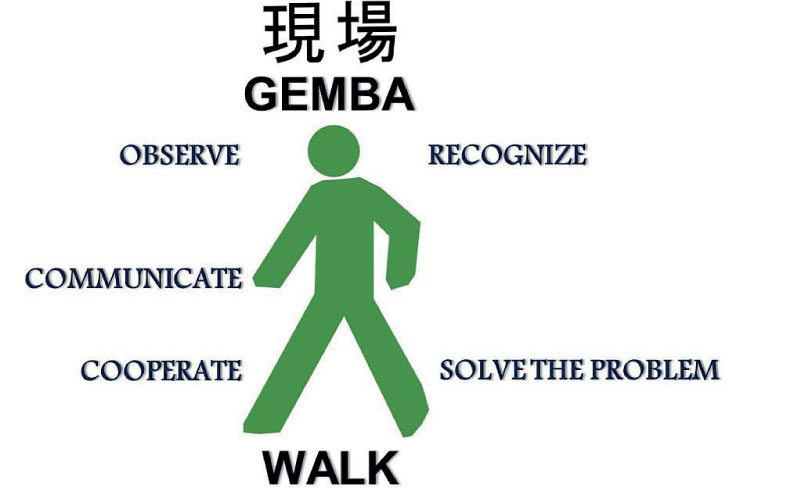Wednesday Dec 10, 2025
Wednesday Dec 10, 2025
Wednesday, 23 August 2023 02:16 - - {{hitsCtrl.values.hits}}

 Sri Lankan industries face stiff competition at present. We had an edge earlier due to the abundance of cheap labour and other resources. This is not so anymore. The only response would be to improve productivity and go lean. A fundamental technique that Japanese managers use to continually improve productivity, quality, safety, on-time delivery and motivation is frequent visits to the Gemba.
Sri Lankan industries face stiff competition at present. We had an edge earlier due to the abundance of cheap labour and other resources. This is not so anymore. The only response would be to improve productivity and go lean. A fundamental technique that Japanese managers use to continually improve productivity, quality, safety, on-time delivery and motivation is frequent visits to the Gemba.
Gemba is the Japanese term for the factory, workshop, or any workplace. It means you visit the Gemba and get first-hand knowledge about what is happening rather than relying only on reports and data. The well-known “Gemba Walk” encourages managers to walk with a purpose, observe the process, and help operators improve productivity.
Many confuse the Japanese “Gemba Walk” with that of the American style “Management by Walking Around” (MBWA), where the CEO walks around and motivates the employees. The American Manager is expected to pat the workers on the back and say something like “Hello, Tom, how are you this morning? How are Susan and the kids?” and so on. By inquiring about his welfare you convert him into a highly motivated worker.
The Gemba Walk is quite different. You observe the process and note any areas that need further improvement in quality, productivity, safety, delivery, etc. Japanese Managers do not sit at their desks with tons of paperwork to complete. They are mainly at the Gemba, continuously observing and improving.
Statistics and reports presented to Managers and the CEO may not reflect the whole truth. The actual situation could only be garnered through direct observation. Sometimes, information may get filtered while it is passed upward. I have successfully practiced this in many of my workplaces. I have cultivated the habit of diligently walking around and observing the work, whether in a factory or an office. The Japanese word Kaizen is familiar to Sri Lankans, thanks to the many seminars and publications. Kaizen is believed to be a key factor that improved the quality and productivity of the Japanese industry and commerce. It is based on the philosophy that the front-line staff who know their operations well are in the best position to come up with improvements.
In a course of study I followed in Japan on Systems and Industrial Engineering, the professor asked, “What is the most important role of an industrial engineer?” None of us could think of the correct answer: “Teach simple productivity improvement techniques to all staff”. It made sense.
Many motivated workers have the desire to improve their performance. Yet, they need to learn how to come up with solutions systematically. Teaching them simple techniques could make vast improvements in their operating methods. A central obstacle for improvement is middle management which could become a significant obstacle. This must be tackled by involving them too in this exercise.
Therefore, managers must visit the Gemba and encourage workers to engage in Kaizen activities. Managers must understand what exactly happens in the workplace and participate in improvement activities. Making observations at the operations level and helping to improve processes is termed “Gemba Kaizen”; doing “Kaizen” at the “Gemba”.
The writer is a Company Director/Consultant